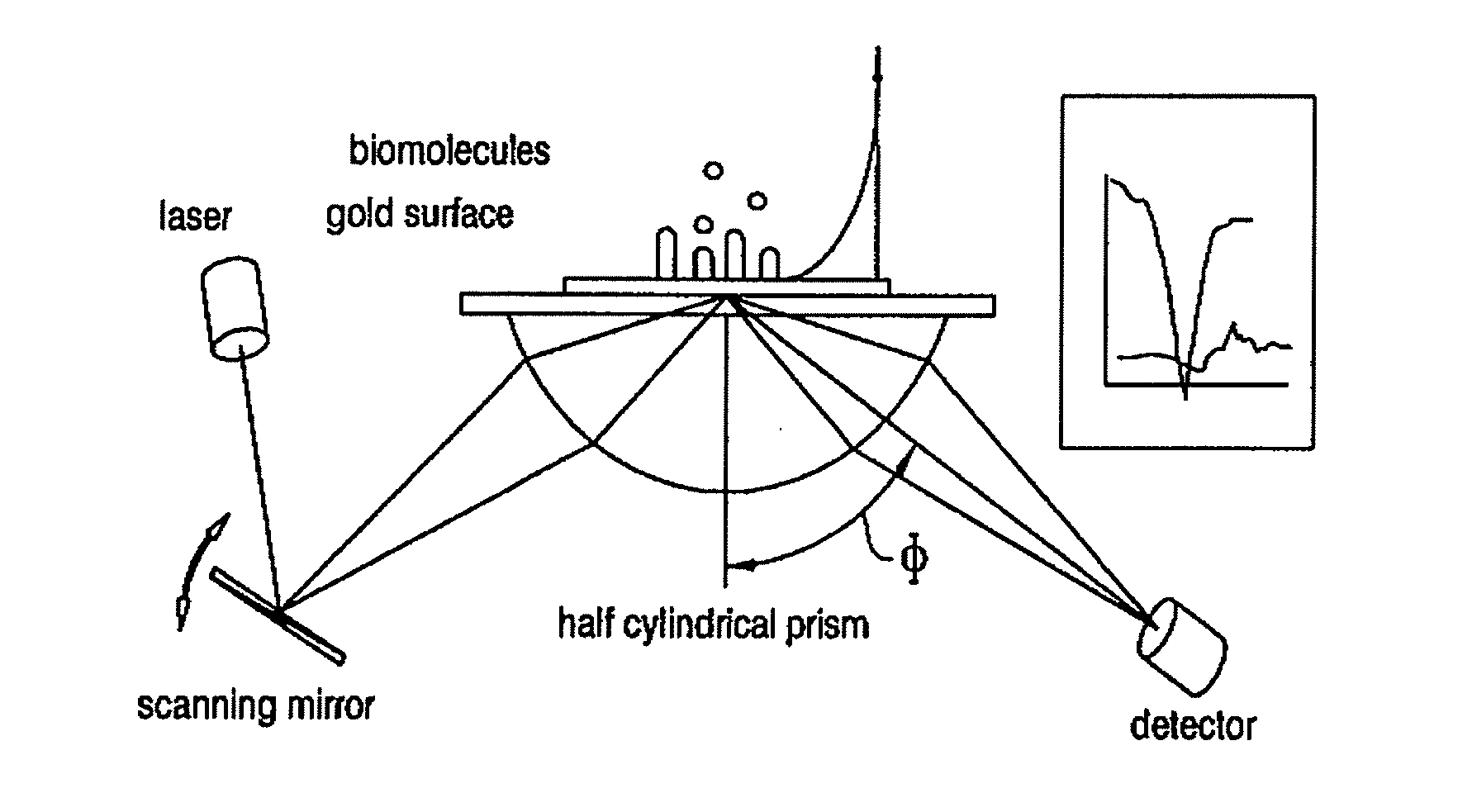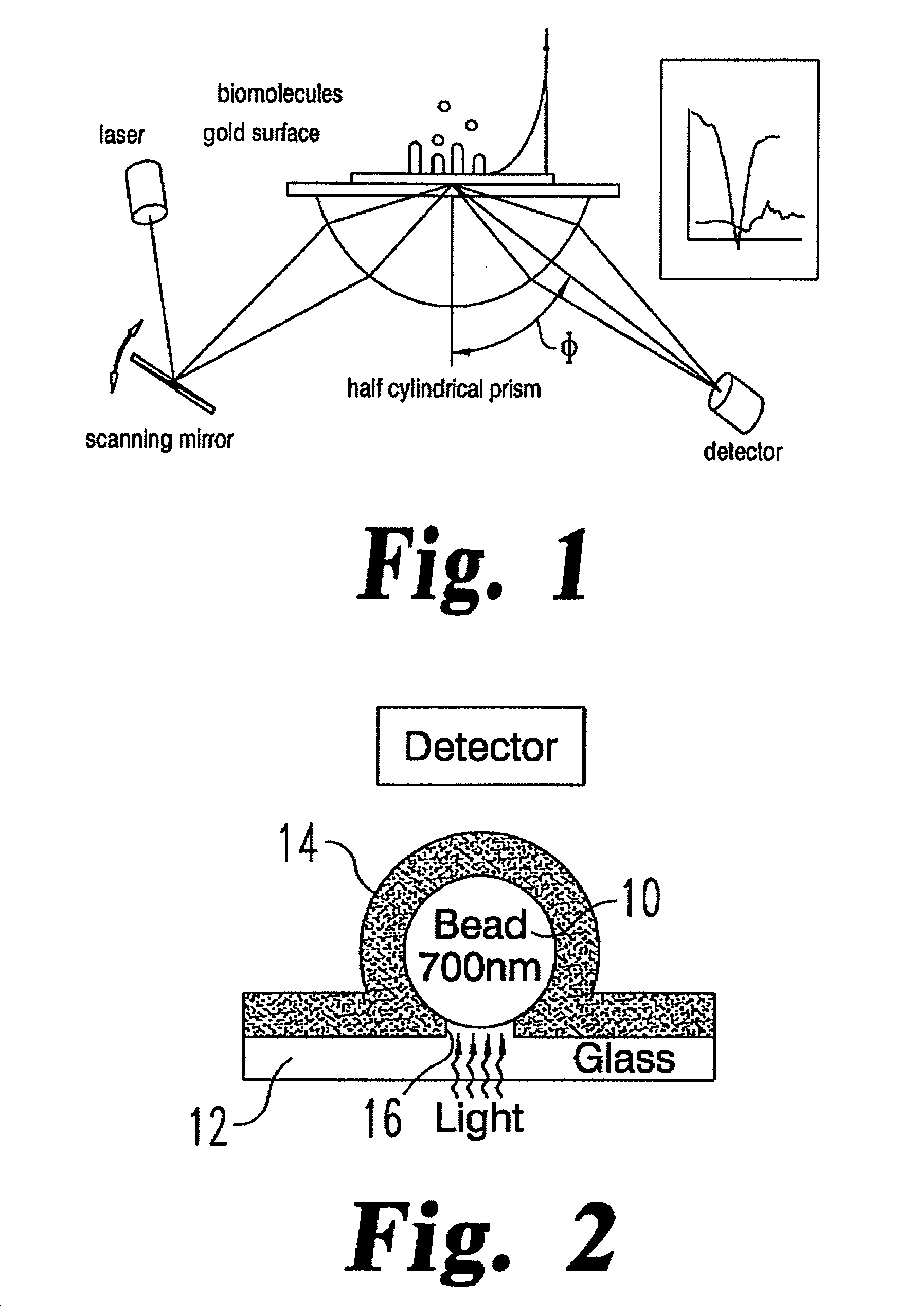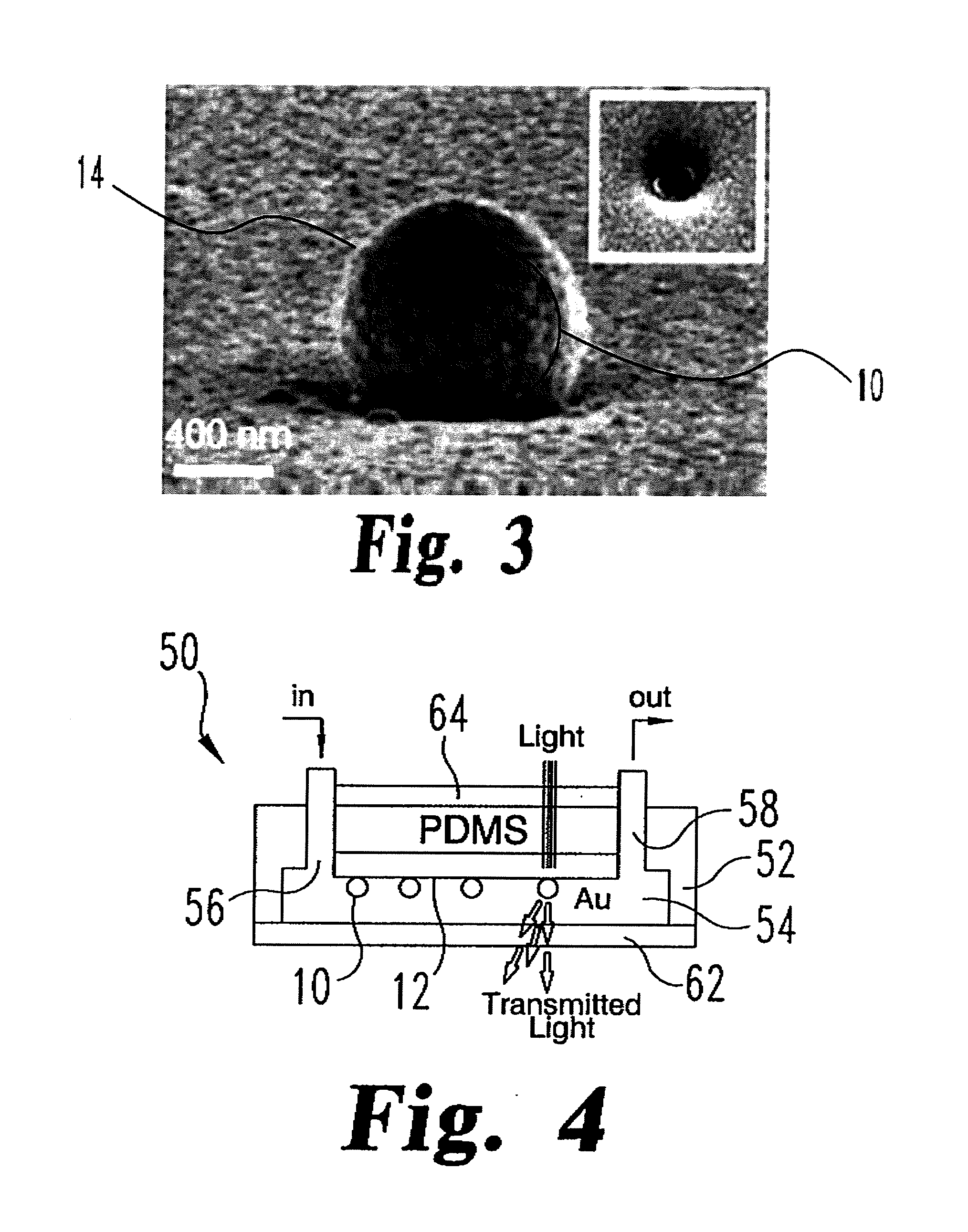Sub-micron surface plasmon resonance sensor systems
a plasmon resonance sensor and micro-micron surface technology, applied in the field of sub-micron surface plasmon resonance sensor systems, can solve the problems of losing surface localization properties, affecting the sensitivity of micro-sensors, and rendering whispering gallery modes ineffective in microsphere environments, etc., to achieve the effect of enhancing the sensitivity and speed of micro-sensor detection, reducing the profile of the present mspr sensor, and eliminating complicated optics
- Summary
- Abstract
- Description
- Claims
- Application Information
AI Technical Summary
Benefits of technology
Problems solved by technology
Method used
Image
Examples
example 1
Fabrication of an MSPR Sensor
[0146]The following is a description of one method for laboratory fabrication of the MSPR sensor shown in FIG. 2. It is understood that other fabrication techniques are possible for specific applications. It is further understood that the immediately following description is principally for a sensor adapted for research use, rather than for commercial application, although the same principles may be applied to produce a commercially viable sensor.
[0147]Microscope cover glasses No. 1, 30×24 mm, 156 μm thick, are scored with a diamond and broken into four equal pieces. Also, microscope slides, 25 mm×75 mm are scored and broken into two equal pieces. The slides and cover glasses (items 12, 62 and 64, respectively, in FIGS. 2 and 4) are cleaned using a modified version of the well-known RCA cleaning protocol (H2O2:H2O:NH4OH-2:1:2, warmed to 70° C.) followed by rinsing in DI water and drying with N2. The cleaned cover glasses are placed in a dry atmosphere in...
example 2
Fabrication of a Micro-Fluidics Chip with MSPR Sensors
[0149]According to another embodiment of the invention, a process is provided for the fabrication of the sensors of the present invention in a micro-fluidic chip, such as the chip 50 shown in FIG. 4. Variations of the same protocol will allow fabrication of more complex sensors. In this process, the MSPR sensors are mounted within a housing, which in the preferred embodiments is in the form of a micro-chip. The micro-chip format for the MSPR sensor allows the sensor to be readily integrated into micro-systems, such as a micro-fluidics chip described herein.
[0150]In accordance with this embodiment, the fluidics chip is made using photolithographic technology and chip replica molding in polydimethylsiloxane (PDMS). The fluidics devices are fabricated using the negative-tone photoresist SU-8 as a master to cast PDMS channel structures. The master substrates are 50 mm×50 mm glass slides. The substrates are cleaned in HCl:HNO3 (3:1), ...
example 3
Operation of the Micro-Fluidics MSPR Sensor Chip
[0155]In one method of using the micro-fluidics chip 50 (FIG. 4), fluid connections from the fluidics chip to fluid reservoirs, such as a syringe or a fluid pump, are made using 1.6 mm OD polypropylene tubing. The flows are controlled by adjusting the height of the reservoir connected to the input channel 56 relative to the height of the reservoirs connected to the output channel 58, or controlled by the fluid pump, so that a stable flow of about 1 μL / s achieved. After the chip is connected to the reservoirs it is placed on a piezo-driven stage capable of motion in all three directions (3D) that can position the sensor chip in space with a precision of 10 nm. The whole ensemble is placed under an inverted microscope and microscope objectives of 40× and 60× are used to collect and analyze the signal coming from a single sensor.
[0156]The functionality and sensitivity of the MSPR sensor 50 may be evaluated using an experimental set-up sho...
PUM
 Login to View More
Login to View More Abstract
Description
Claims
Application Information
 Login to View More
Login to View More - R&D
- Intellectual Property
- Life Sciences
- Materials
- Tech Scout
- Unparalleled Data Quality
- Higher Quality Content
- 60% Fewer Hallucinations
Browse by: Latest US Patents, China's latest patents, Technical Efficacy Thesaurus, Application Domain, Technology Topic, Popular Technical Reports.
© 2025 PatSnap. All rights reserved.Legal|Privacy policy|Modern Slavery Act Transparency Statement|Sitemap|About US| Contact US: help@patsnap.com



